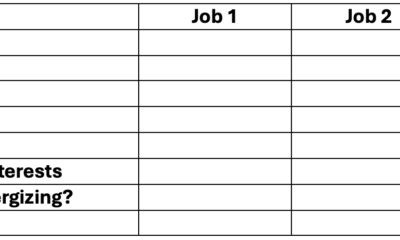Professional Development
OKRs Defined: The Ultimate Goal Setting Framework

Unlocking Growth Potential with OKRs: A Comprehensive Guide
OKRs (Objectives and Key Results) are a powerful yet simple framework that helps organizations unlock their growth potential. Through effective OKR implementation, world-leading companies like Google, Intel, and LinkedIn have been able to infuse clarity, focus, and alignment throughout all levels, driving sky-high performance.
In this comprehensive guide, we will explore everything you need to know about OKRs – how the OKR framework was conceptualized, the core components that make an OKR, the types of OKRs, best practices for implementation, and common pitfalls to avoid. By the end, you’ll understand why OKRs have transformed strategic planning at so many organizations and be fully equipped to leverage this approach to maximize your business results.
What are OKRs?
OKR stands for Objectives and Key Results – the two central elements that comprise this proven goal-setting framework. Originally developed in the 1970s by legendary Intel CEO Andy Grove, OKRs help organizations and teams define and align around their most important outcomes for a fixed time period.
Objectives are ambitious, inspirational targets that matter greatly to the business strategy. They describe the “What” – the aim or destination. Key Results are the specific, quantifiable metrics that indicate progress toward achieving the objective. They answer the “How” – how success will be measured.
If OKR is implemented well, it greatly enhances clarity, focuses efforts, and generates accountability. Everyone understands the shared objectives and their defined contributions, infusing purpose and driving aligned action. Regular progress updates ensure milestones are tracked transparently for on-course corrections when needed.
The core OKR methodology remains consistent across implementations – consisting simply of tangible Objectives supported by concrete Key Results. However, organizations use OKRs flexibly based on their unique strategic needs and team dynamics. Committing to the framework’s principles of focus, transparency, and accountability is key.
History and Conceptualization
The OKR model was conceived in the 1970s by Intel visionary Andy Grove. Frustrated with ineffective annual planning cycles, he drew inspiration from management by objective frameworks to develop a more dynamic approach.
Grove believed too much time was wasted on low-priority tasks instead of vital high-impact goals. OKRs refocused efforts by setting clear objectives and measuring progress continuously, not just annually. This allowed Intel to respond faster to market shifts, fueling their explosive growth.
In the late 1990s, Google co-founders Larry Page and Sergey Brin learned about OKRs from venture capitalist and Intel board member John Doerr. They adapted the system to Google’s startup culture, upgrading objectives quarterly to remain nimble in those uncertain early years.
OKRs epitomized Google’s spirit of ambitious striving, transparency of information, and data-driven decision making. The impact was transformational – OKRs helped Google scale at lightning speed while retaining a cohesive culture and vision, becoming one of the most valuable companies in history.
Today, countless global organizations effectively leverage OKRs, including Samsung, General Motors, Under Armour, Amazon, LinkedIn, Disney, and more. Executed well, OKRs supercharge outcomes, speed, and market agility for businesses of any size across sectors. Their simple yet disciplined approach delivers proven results.
Components of an OKR
To set impactful OKRs, it’s important to understand the key components that define each one:
- Objective: An aspirational statement describing a one-year or quarterly destination. Should challenge and excite, with scope significant enough to meaningfully move business goals forward.
- Key Results: 3-5 quantifiable metrics tracking progress towards the objective’s completion. Together they represent fulfilling the objective. Each KR answers “How” the objective will be achieved and success measured.
- Time Frame: Objectives cover fixed periods (quarterly or annually), requiring alignment with planning calendars. KRs may be set for completion within the larger time frame.
- Ambition: Objectives should stretch the organization without being unattainable. Achieving all KRs fulfills this goal.
- Simplicity: OKRs aim to be clear, actionable, and easily understood by all. Simplicity focuses people on the vital few priorities vs. less important tasks.
- Alignment: Objectives cascade down and across an organization, with each level and function contributing effort towards shared goals.
Types of OKRs
Different types of OKRs suit different situations depending on the objective’s nature and a team’s experience with the framework. Common varieties include:
-
Committed OKRs
Committed OKRs, also known as “stretch goals,” are objectives and key results that an organization or team commits significant resources to accomplish. They represent the most important goals that should be achieved each cycle. Committed OKRs are outcome-driven and focused on results that can be attained through diligent effort and dedication of means.
-
Stretch/Aspirational OKRs
Stretch or aspirational OKRs push beyond boundaries into uncharted domains. They represent ambitious objectives the attainment of which would signify a major breakthrough or advancement.
-
Operational OKRs
Operational OKRs focus team efforts on delivering against objectives that are nearer-term and process-oriented compared to strategic aims.
-
Strategic/Transformational OKRs
Strategic or transformational OKRs represent ambitious, long-term objectives aimed at new directions or profound changes with an extended timeline.
-
Testing OKRs
Testing OKRs represent tentative objectives formulated to explore unproven ideas, test assumptions, or validate hypotheses at a limited scale prior to larger commitments.
The right mixture depends on an organization’s goals, risk tolerance, existing performance, and OKR experience. Oversimplifying reduces motivation, while taking on too much at once risks undermining the system’s credibility.
Best Practices for Implementing Effective OKRs
Creating impactful OKRs requires focus, alignment with strategy execution, and buy-in across divisions. Several best practices facilitate robust objective and result composition:
- Gather input upfront from those expected to work towards the OKRs. Cross-functional collaboration yields shared understanding and commitment.
- Craft objectives addressing high priority strategic initiatives or operational issues clearly tied to desired outcomes. Phrase positively (“achieve X” not “avoid Y”).
- Connect objectives to overall organizational goals and map dependencies between divisions. OKRs supplement rather than replace other plans.
- Make key results Specific, Measurable, Action-oriented, Realistic yet Rigorous, and have clear Time frames. Avoid vanity metrics that don’t indicate meaningful progress.
- Limit objectives to 3-5 paired with 3-5 results each to avoid complexity that dilutes focus. Simplicity is paramount.
- Consult example OKRs from other organizations but customize them to your unique needs, context, and style. Internalized ownership is key.
- Pilot test draft OKRs by critiquing understandability and soliciting feedback before firm commitments. Iterate based on input.
- Establish clear accountability by assigning owners responsible for monitoring each result and escalating issues impeding progress.
OKR implementation best unfolds over repeated cycles of planning, execution, and review calibrated for one’s evolving strengths with the model. Continuous refinement strengthens OKRs as a growth driver.
Aligning OKRs Across Teams
To synchronize efforts organization-wide, objectives must cascade cohesively through all levels from executives to frontline employees. Each tier then establishes its unique contribution supporting the next:
- Executive OKRs: Strategic goals and KPIs for the whole company over a 12-month period. Outline major targets.
- Group OKRs: Objectives for key functions or divisions, outlining their role in achieving executive goals over quarters.
- Department OKRs: Quarterly plans detailing individual departmental responsibility to support group targets.
- Individual OKRs: Quarterly personal objectives directly impacting the completion of departmental OKRs.
Ensuring alignment prevents mismatched priorities or redundant, competing goals between teams. Transparency into interdependencies breaks down silos and fosters cooperation across traditional boundaries. Progress rollups then assess the impact of collective efforts.
Common Pitfalls to Avoid When Implementing OKRs
Here are some common pitfalls to avoid when implementing OKRs:
- Avoid Overcomplicating OKRs: One of the biggest mistakes in implementing OKRs is overcomplicating the process.
- Limit Objectives and Key Results for Focus: Related to overcomplication is having too many objectives or key results.
- Set Realistic Yet Ambitious Goals: Another pitfall is setting unrealistic goals.
- Manage Expectations for Quick Results: Related to unrealistic goals is expecting quick results from OKRs.
- Use OKRs for Strategic Change, Not To-Do Lists: Another common pitfall occurs when OKRs are used as basic to-do lists or for business-as-usual tasks.
- Ensure Regular Communication and Check-ins: Poor communication and lack of regular check-ins is also a pitfall.
- Encourage Bottom-Up Engagement: Finally, only setting OKRs in a top-down manner without bottom-up input risks missing engagement opportunities.
Conclusion
OKRs are a powerful framework for helping organizations set and achieve strategic goals. When properly implemented using monitoring tools, OKRs can drive focus, alignment, and transparency across teams. Whether committed or aspirational, OKRs of all types motivate teams by connecting their work to meaningful outcomes.
-

 Professional Development1 month ago
Professional Development1 month agoDrawing up your strategy
-

 Personal Growth2 months ago
Personal Growth2 months agoSucceeding as a ‘parentpreneur’: Top tips
-

 Videos2 months ago
Videos2 months agoGreat Leaders INSPIRE Others To Do Great Things
-

 Productivity1 month ago
Productivity1 month agoHow to Increase Remote Work Productivity
-

 Productivity2 months ago
Productivity2 months agoTips for Boosting Work Productivity
-

 Productivity2 months ago
Productivity2 months ago5 Ways to Increase Your Personal Assistant’s Productivity
-

 Leadership1 month ago
Leadership1 month agoHow to Tackle Big Challenges
-
Leadership1 month ago
Cutting Through the Clutter of Internal Communications




























